C4 Identification and Selection
By: Paul Pearson
e-mail: paul_pearson@hotmail.com
So you're looking for a C4 for your vehicle, but you don't know what type you need or don't know how to identify the one that you do want? This article should give you a better grasp on the different types and uses of C4 transmissions.
C4's were produced and used in production cars and trucks from 1964 to 1981, when they were replaced by the three speed automatic transmission with lockup torque converter known as the C5. In this timeframe there were several versions, each with significant differences that, depending on your application, might make one better for you.
From 1964 through 1969, the C4's made had a 24 spline input shaft and front hub assembly, and with the lower spline count came a slightly smaller diameter on the input shaft. This year range is still desirable, as its case is identical to the 70-81 case fill C4 transmissions, so the old 24 spine parts can be upgraded to 26 spline. However, the valve bodies in the transmissions are different. The valve bodies fall into 4 different groups. 64-66, 67-70, 70-81, and the Pinto valve body. Keep this in mind when selecting a C4, since the valve bodies cannot be interchanged between year ranges (a 64-66 valve body wouldn't work on a 70-81 C4).
Bell housings came in both 157 (small) and 164 tooth (large) bell housing sizes, with matching flex plate sizes.
In 1970, the C4 got an upgrade. The input shaft and front hub were strengthened by enlarging them to 26 spline, increasing the input shaft diameter, but also making its torque-converter and input shaft non-interchangeable with the older 24 spline 64-69 C4's. The 1970 through 1981 case fill C4's also came in 157 and 164 tooth bell housings, but a new variant was created, the pan-fill C4. Sporting a 164 tooth bell housing and flex-plate, and a differently designed bell housing and transmission case, it was put mainly into trucks during its usage. There was also an oddball C4 bell housing, the 143 tooth version that came in Mustang II's and Pintos, possibly Mavericks as well. This transmission is not desirable at all because of internal differences, like a weaker input shaft and oddball valve body. Also be careful, there are some 4 and 6 cylinder bell housings out there, the starter is at approximately 10 o'clock, looking at the trans from the back. Obviously this is not desirable either.
Now what is the difference between the pan fill and the case fill C4's you might ask? The difference is in the transmission case itself, and the bell housing. On a case fill C4, the bell housing meets the transmission case at nearly a 90-degree angle, with the case remaining flat as it approaches the bell housing. The case fill gets its name from the fact that its dipstick/fill tube goes into the transmission case. On the pan-fills, the dipstick/fill tube goes into the transmission pan, with a threaded fitting. The routing of the pan-fill dipstick tube sticks out from the side of the transmission much more than a case-fill, and in a place that can cause more of a problem with header clearance. The other large difference with the pan fill is that the transmission case flares out as it nears the bell housing. The angle between the bell housing and transmission case is much less than a case fill C4, maybe only 60 degrees or so. Also with the pan-fills, the bell housing bolts onto the case with bolts outside the front pump, where the case fill bell housings attach with the pump bolts.
What C4 to use:
So what C4 do you want or need to use for your application? That depends on several things. In vehicles not running long-tube headers or where the headers do not run close to the transmission, a pan-fill may fit the bill, although the extra material in the case likely adds a few pounds. Most go for the case fill C4, since it usually provides better header clearance. Then to the question of: what bell housing size do I want to use? Again, it depends. If the car was previously a T5 car with long-tubes, or if long-tubes will be added in the future, a 157 tooth bell housing would be preferable because there will be much less problems with header clearance as compared to a 164 tooth bell housing. If the car previously had an AOD, it may be preferable to go with the 164 tooth bell housing, since AOD's are 164 tooth, and any header that clears an AOD will definitely clear a 164 bell C4. Also, by using the 164 tooth bell, you can re-use your old AOD flex-plate.
What imbalance and tooth count flex-plate do I need?
For HO 302's, you will need a 50oz imbalance flex-plate in whichever tooth count you choose for your bell housing (157 tooth bell needs a 157 tooth flex-plate, etc...). Non-HO 302's and ALL 351W engines use 28oz imbalance flex-plates, and the flex-plate tooth count is again the same as the bell housing. It is VERY important that the correct imbalance flex-plate be used, or engine damage will occur. Generally 157 tooth flex-plates have a 10.5" bolt pattern for the converter, while the 164 tooth flex-plate has a 11 7/16" bolt pattern, so you also make sure the bolt pattern of your converter matches the flex-plate.
The only "special" flex-plates (ones never made by Ford) are the 50oz imbalance 157 tooth flex-plates. AOD flex-plates are 164 tooth 50oz imbalance, and 28oz imbalance flex-plates were made in both 164 and 157 tooth versions. Several companies sell flex-plates, some in SFI versions, if you cannot find the stock equivalent of what you need.
How do I find the C4 I need?
Now I'm sure you're wondering how to find the C4 that you want. Its pretty easy if you know what to look for. We'll start off with the case fill model. As mentioned before, the case fill C4 has a near 90 degree intersection with the bell housing. The bell housing bolts onto the case through the pump bolts, so there are only one set of bolts inside the bell housing. Figuring out what size bell housing you're dealing with is also quite simple. The 157 tooth bell has ribs running down the middle that reach all the way down to the transmission case. The 164 tooth bell has those same ribs, except they stop about 4 inches or so before the transmission case. Case fills are most commonly found in passenger cars with small-blocks.
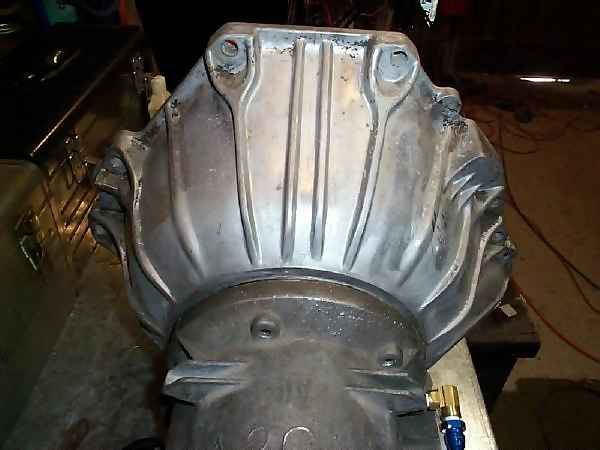
Here is a 1976 case-fill with a 157 tooth bell housing:
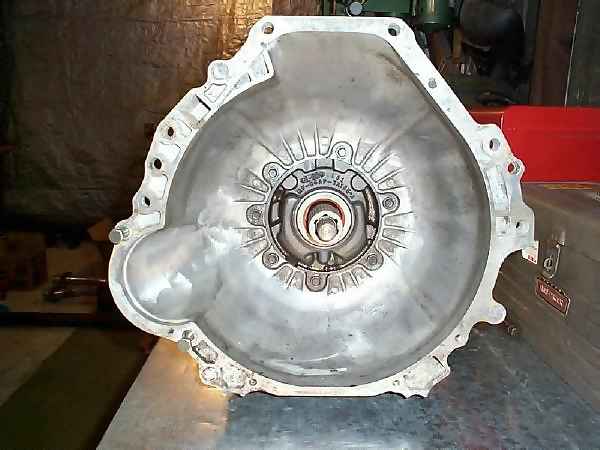
Here is a 1976 case-fill with a 157 tooth bell housing (note the lack of a flare at the bellhousing):
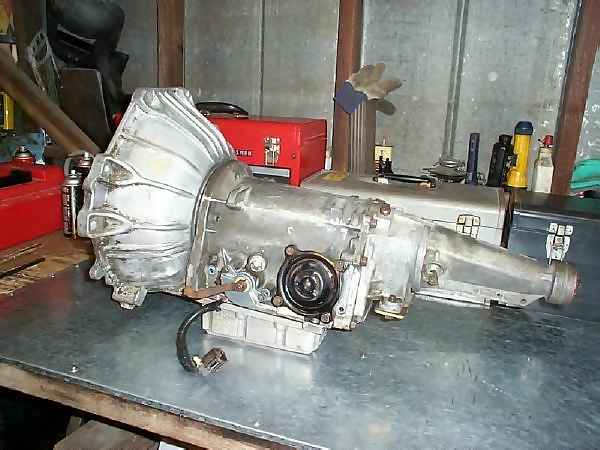
Here is another shot of a 1976 case-fill with a 157 tooth bell, with TCI servo and extra capacity pan:
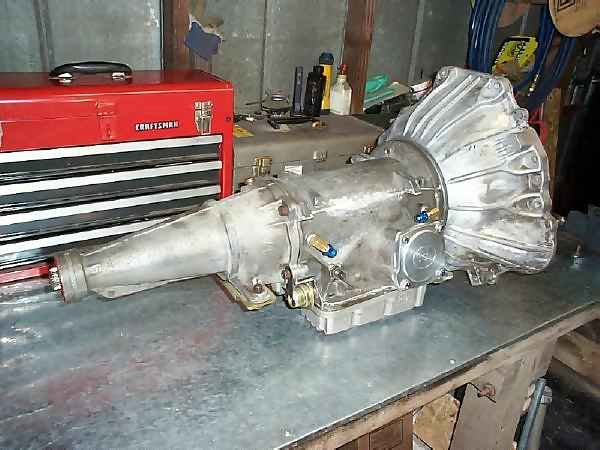
The pan fill transmission is quite easily identified by its pan-located dipstick, and flared case where the bell housing bolts on. It has 2 sets of bolts in the bell housing, 7 for the front pump and another 5 to attach the bell housing. The pan fill C4 only comes with the 164 tooth bell, which is specific to the pan fill. It is most often found in 70's trucks and vans.
Here is a 1977 pan-fill C4 with the 164 tooth bell (note that the ribs stop before the transmission case):
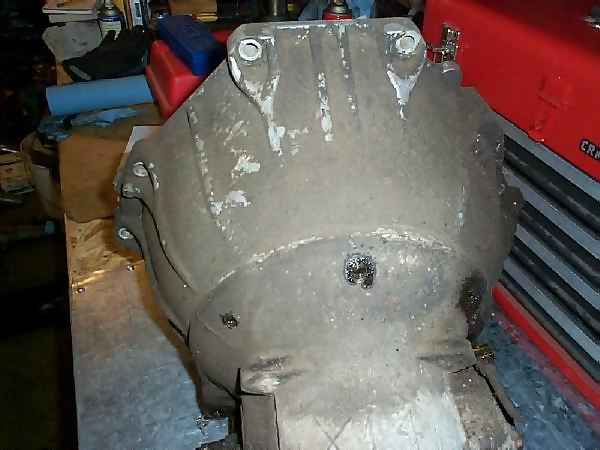
Here is a picture of a 1977 pan-fill with a 164 tooth bell housing (note the 5 seperate bellhousing bolts):
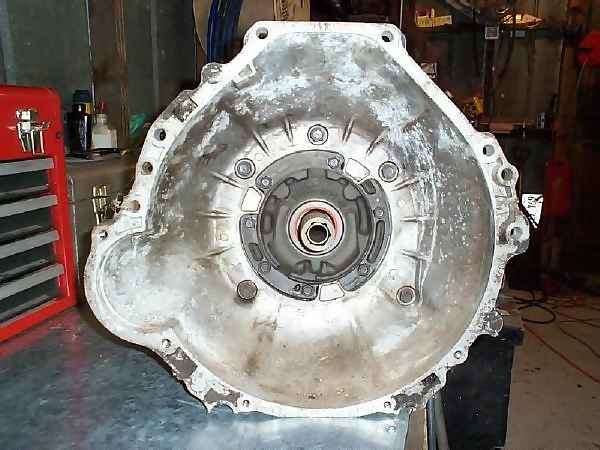
Here is a 1977 pan-fill C4 with the 164 tooth bell (note the flared transmission case):
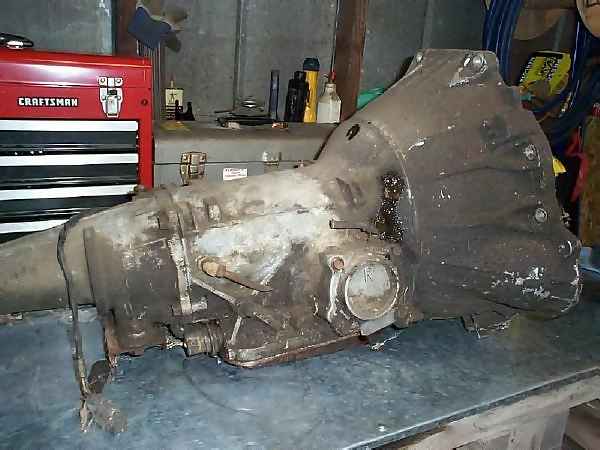
Here is a 1977 pan-fill C4 with the 164 tooth bell removed (note the flared transmission case):
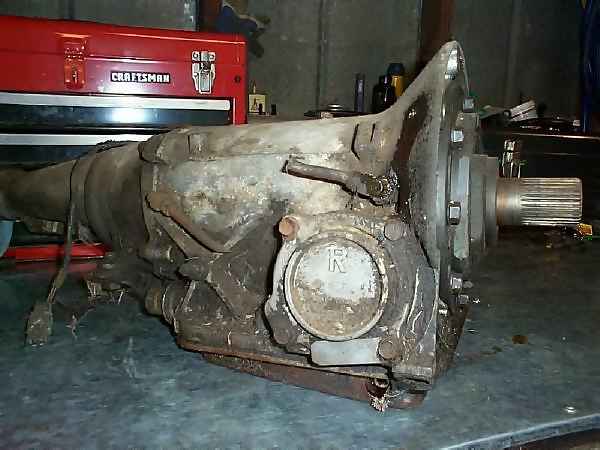
How do I know what year a certain C4 is?
The easiest way is to check the transmission identification tag, which is located under one of the servo bolts on the passenger-side servo. On some transmissions the tag may be located under one of the driver-side servo bolts. There should be a series of numbers and letters which tell what year it is. For example: D7SP would mean that the transmission is a 1977 model. If you do not know the Ford part number decoding system, look here.
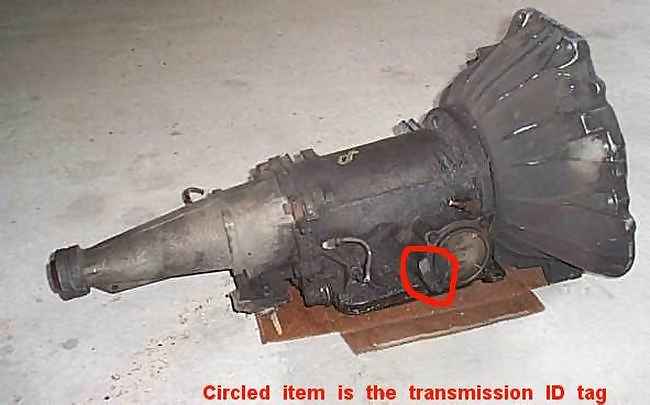
Here is a disassembled 1976 case-fill C4 with the 157 tooth bell, case, and tailshaft housing:
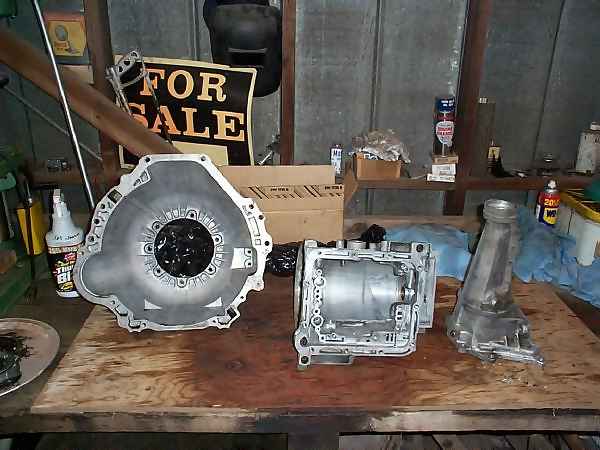
Transmission ID tag decoder
*NOTE* Some C4 part numbers may not follow the traditional Ford number system
Detailed exploded C4 diagram
This is the best exploded diagram that I have run across so far
Hopefully this will shed some light onto some of the different versions and uses for the C4 transmission, and help you make the right decision on what's right for your particular project.